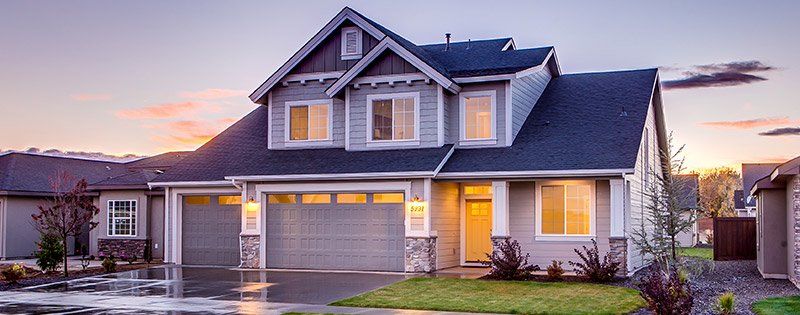We also evaluate the condition of the structural framing of the house. Visible framing typically includes the underside of the first floor system (as viewed from the basement) and sections of the roof system (as viewed from the attic access). In addition, when evaluating the interior and exterior of the house we look for signs that would indicate structural problems in components that are not visible. This includes unusual floor slopes, out-of-plumb conditions, wall and ceiling cracks that are greater than what would normally be expected, etc.
The Premier Rochester NY Inspection Firm
Pro-Engineered Inspections
95 Allens Creek Road • Building 2, Suite 211 • Rochester, NY 14618
What we Inspect
Need an inspection?
Contact us to have your home or building inspected by a Licensed New York State Professional Engineer.
RESIDENTIAL HOME INSPECTIONS: WHAT WE INSPECT
Our thorough engineer’s inspection includes:
Foundation
We examine the foundation walls and analyze areas of distress, including cracking, buckle, spalling, etc. Many of these conditions are common to a small degree. Our engineers are able to evaluate the severity of distress and damage, consider possible reasons for the deterioration, and recommend corrective actions to be taken if any are necessary.
Structural Framing
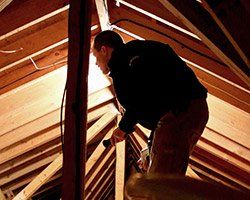
Basement Water
Basement water infiltration is a common condition in our area. We look for signs of water penetration and related damage. We also provide recommendations regarding ways to reduce moisture penetration. Exterior grading, gutter systems and other site drainage features are visually assessed in relation to their contribution to basement water penetration. We also try to evaluate ways for water accumulation in the basement to be removed or controlled.
Heating and Air Conditioning Systems
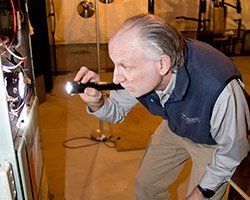
This includes a test of the equipment to evaluate functionality. Air conditioning units can be tested when the weather is warm enough to permit testing. We will also evaluate the heat exchanger of gas and oil fired forced air furnaces when they are accessible without significant dismantling of the furnace (mostly older furnaces). Our engineers will also provide our clients with information regarding the age of heating and air conditioning equipment, their anticipated life expectancy, maintenance recommendations, approximate equipment efficiency, etc.
Plumbing System
We provide information regarding the type of waste and supply pipes. We also operate each of the interior plumbing fixtures to check for proper operation of drains, to check for proper operation of fixtures, to check for leaks, and to evaluate water pressures. We can provide information regarding anticipated life expectancy of the components of the plumbing system and the potential for upcoming repairs. We also evaluate the water heater to give our clients some perspective as to age, life expectancy, and capacity.
Electrical System
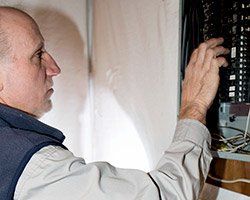
We visually evaluate the electrical system and the components that are accessible. This includes removing the cover of the main electric panel and evaluating visible portions of the power wiring. We also test a random sample of outlets, switches, and light fixtures. We provide our clients with information pertaining to adequacy of capacity of the electric service and the need for modernization or upgrades. We comment on the presence of ground fault protection, the adequacy of the number of outlets, and the need for significant repairs.
Interior
We examine many items including the condition of the walls, floors, ceilings, and the presence of visible water damage, large cracks, and unusual damage. We also check for heating and cooling sources in the rooms and the adequacy of the number of electrical outlets. We examine doors and windows, checking the operation of a random sample and visually evaluating their condition. Stains and/or problematic areas can be analyzed with moisture meters and/or thermal cameras when applicable. We also test the major appliances that are included with the sale of the home.
Chimneys, Fireplaces, and Wood Stoves
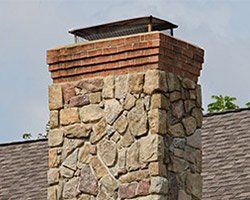
We provide information regarding damage in the chimney flue and firebox that are visible from the inside or roof, and also damage to the visible areas of the chimney. Some or our clients opt for a more comprehensive evaluation of the chimney(s), fireplace(s) or wood stove(s). In these cases, we can arrange for an inspection by an independent chimney contractor to evaluate these components.
Insulation
We examine attic spaces to evaluate the amount and type of insulation. Insulation will also be evaluated in those other areas that may be accessible, including the basement space.
Ventilation
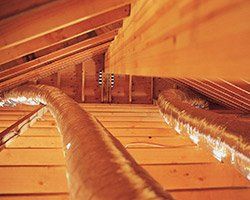
We also evaluate the ventilation of the attic or roof system. This includes examination of the accessible areas of the attic to determine if condensation has been occurring on the underside of the roof, which is an indication of inadequate ventilation, and is a common problem. Inadequate ventilation can cause damage to the roof and roof sheathing, causing ice damming problems, contribute to peeling paint on the exterior of the house, and make the house warmer during the summer months. It can also raise a concern for mold.
Exterior
We examine the exterior surfaces including siding, trim, etc. This includes an evaluation of the condition of the paint. We also examine storm windows, screens, the gutter system, and other exterior features, and we comment on the condition of these components.
Roof
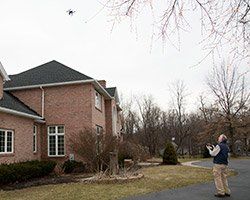
Roof surfaces are examined by accessing the roof when possible. For more difficult roofs, evaluating from the ground and also through the use of drones may be most efficient. The full extent of our examination depends on the physical accessibility of the roof based on the pitch, height, snow cover, and other factors relating to safety. The roof will be evaluated as to its condition, repairs that are necessary, and anticipated life expectancy.
Not all Ridge Vents are created equal and require professional inspection...https://www.youtube.com/watch?v=6VVLAooYOSA
Garage
We also evaluate garage structures to determine their condition. Garage door openers will be tested.
Infrared Camera Inspections
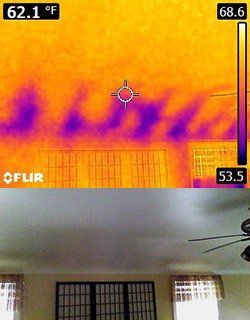
Through the use of a thermal cameras we can detect water and moisture issues that can lead to mold and other problems. As well, efficiency of insulation and other heat sources can best be evaluated by the use of thermal cameras for heat loss, etc. Cameras can also be used to inspect heated floors, to find hidden hotspots, energy waste, structural defects, plumbing clogs, HVAC issues, and other problems.
The accompanied photo shows inadequate ventilation of the roof system.
Grounds
We examine decks, patios, grading, etc., to provide our clients with a general understanding of the condition of these components.
The Report
After inspection, our clients will then receive (via e-mail and/or US mail), generally within 24 hours, a detailed report that is specifically tailored to the property. The report also describes our findings in an understandable manner. Digital photographs are included to enhance the report and the information provided.
We feel strongly that the typewritten engineer's report provides our clients with a much better understanding of the property they are purchasing, as compared to the more common check-list type of report that is issued by most home inspectors. The report explains our findings of the major systems, significant deficiencies that may have been present, a description of the types of systems in the house, repair suggestions, and improvement suggestions.
We recommend that our clients accompany us during the inspection which allows you to see "first hand" the conditions and deficiencies that will be described in the written report.
Our building evaluations are based on visible evidence reasonably available during our inspection, and the evaluation is a visual and functional type of inspection. While our inspection is not a guarantee or warrantee for the property, our report can be considered a sound, professional opinion based on our experience of examining thousands of structures. Observations and conclusions are limited, since conditions could exist that are hidden from view or cannot be known or discovered during our inspection as we are bound to professional standards.
Safety First. We use and recommend: http://telesteps.net/
AFTER THE INSPECTION
Our engineers stand ready and willing to answer questions that our clients may have after an inspection is performed or after they move into the house. In some cases, our clients have contacted us years after the inspection was performed. If we can provide information that is useful (e.g. advice that is received from contractors or about whether certain repairs are necessary) we are glad to provide whatever advice we can.
The whole intent of the inspection and report is to provide our clients with a much better understanding of the house and what this means to their future ownership. If there are problems with certain components, our evaluation also provides a better understanding of what it will take to correct these problems.
Get a quote or schedule an inspection today
Location
95 Allens Creek Road, Building 2, Suite 211
Rochester, NY 14618
Phone

Warren Engineering has been specializing in building and home inspections for over 45 years.
Our Services
Quick Links
Business Hours
Mon-Fri: 8:30am - 4:30pm
Sat-Sun (& holidays): 8:00am - 8:00pm
Appointments taken via phone 7 days a week
Warren Engineering. All Rights Reserved.

